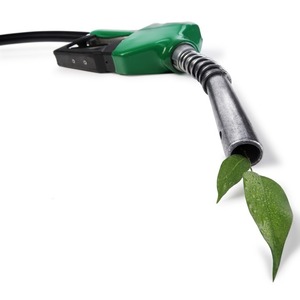Ethanol groups to Biden: Biofuels can reduce GHG emissions now

August 5, 2021
BY Erin Krueger
President Biden on Aug. 5 signed an executive order that sets a target to make half of all new vehicles sold in 2030 zero-emissions vehicles. Representatives of the ethanol industry, however, say biofuels can make meaningful greenhouse gas (GHG) reductions now.
According to the White House, the executive order aims to increase the impact of the Build Back Better investments, positioning America to drive the electric vehicle future forward, outcompete China, and tackle the climate crisis. Zero-emissions vehicles targeted by the executive order include battery electric, plug-in hybrid electric, and fuel cell electric vehicles. The executive order also kicks off the development of long-term fuel efficiency and emissions standards.
Members of the U.S. ethanol industry have issued statements in response to Biden’s action, calling on the administration to expand its focus, and recognize the GHG reduction potential of renewable fuels.
Advertisement
Advertisement
The American Coalition for Ethanol cited data showing that electric vehicles alone cannot reach GHG reduction goals. Clean fuels are also needed. “Pledges to make more electric vehicles in the future will do little to reduce GHG emissions until and unless the way we generate electricity in the U.S. undergoes expensive and prolonged changes,” said Brian Jennings, CEO of ACE. “The environmental impacts, technical hurdles, and supply chain roadblocks for critical minerals needed for EV batteries also need to be understood and remedied before EVs could make meaningful reductions in GHGs.
“Meanwhile, nearly 100 percent of all U.S. light-duty vehicles on the road today use liquid fuels. Scientists indicate corn ethanol is already 50 percent cleaner than gasoline,” he added. “If we want to get serious about tackling climate change sooner rather than later, government officials and automakers ought to be taking steps right now to help ensure motorists have greater access to low-carbon alternatives to gasoline such as E15 and E85. Each increased gallon of ethanol used in the U.S. today reduces GHGs and the Administration can take steps today through the Renewable Fuel Standard to push more ethanol into the marketplace.
“Earlier this year the Rhodium Group released a compelling report indicating even under the most aggressive sales projections, EVs alone will not accomplish the goal of President Biden and Congress to reach net-zero emissions by 2050,” Jennings continued. “Rhodium explained that increased reliance of clean fuels (and efficiency standards) will be needed to close the emissions gap. Ethanol is available right now as a clean and low cost fuel.”
Advertisement
Advertisement
The Renewable Fuels Association said ethanol is available now and can jump-start decarbonization efforts. “We agree with the Biden administration that action needs to be taken now to begin aggressively reducing GHG emissions from transportation,” said Geoff Cooper, president and CEO of the RFA. “But decarbonizing our nation’s fuels and vehicles is going to take an all-of-the-above approach that stimulates growth in all available low-carbon technologies. The overarching goal should be to reach net-zero emissions as quickly as possible without dictating the pathway to get there or putting all our eggs into one technology basket. We believe any plan to decarbonize the transportation sector should recognize the massive opportunity for low-carbon liquid fuels like ethanol to reduce GHG emissions from internal combustion engines in the near term.
“Even if half of new vehicles sold in 2030 are electric, four out of every five cars on the road that year will still have internal combustion engines that require liquid fuels,” Cooper added. “Renewable fuels like ethanol offer a solution that is available right here, right now at a low cost to jump-start decarbonization efforts. In fact, a recent analysis from the Department of Energy’s Argonne National Laboratory shows that today’s ethanol reduces GHG emissions by more than half compared to gasoline. And last month, RFA’s ethanol producer members pledged to President Biden that we would ensure ethanol achieves a net-zero carbon footprint, on average, by 2050 or sooner. We are already well on the way to net-zero with ethanol and we encourage the Biden administration to embrace and promote renewable fuels as an important component of the nation’s decarbonization strategy.”
Related Stories
The U.S. Energy Information Administration maintained its forecast for 2025 and 2026 biodiesel, renewable diesel and sustainable aviation fuel (SAF) production in its latest Short-Term Energy Outlook, released July 8.
XCF Global Inc. on July 10 shared its strategic plan to invest close to $1 billion in developing a network of SAF production facilities, expanding its U.S. footprint, and advancing its international growth strategy.
U.S. fuel ethanol capacity fell slightly in April, while biodiesel and renewable diesel capacity held steady, according to data released by the U.S. EIA on June 30. Feedstock consumption was down when compared to the previous month.
XCF Global Inc. on July 8 provided a production update on its flagship New Rise Reno facility, underscoring that the plant has successfully produced SAF, renewable diesel, and renewable naphtha during its initial ramp-up.
The U.S. EPA on July 8 hosted virtual public hearing to gather input on the agency’s recently released proposed rule to set 2026 and 2027 RFS RVOs. Members of the biofuel industry were among those to offer testimony during the event.
Upcoming Events










